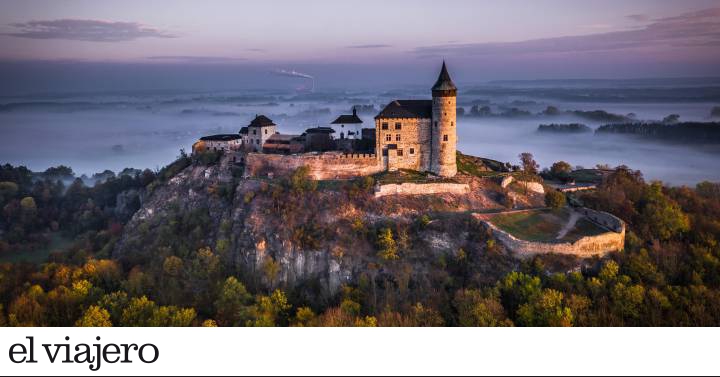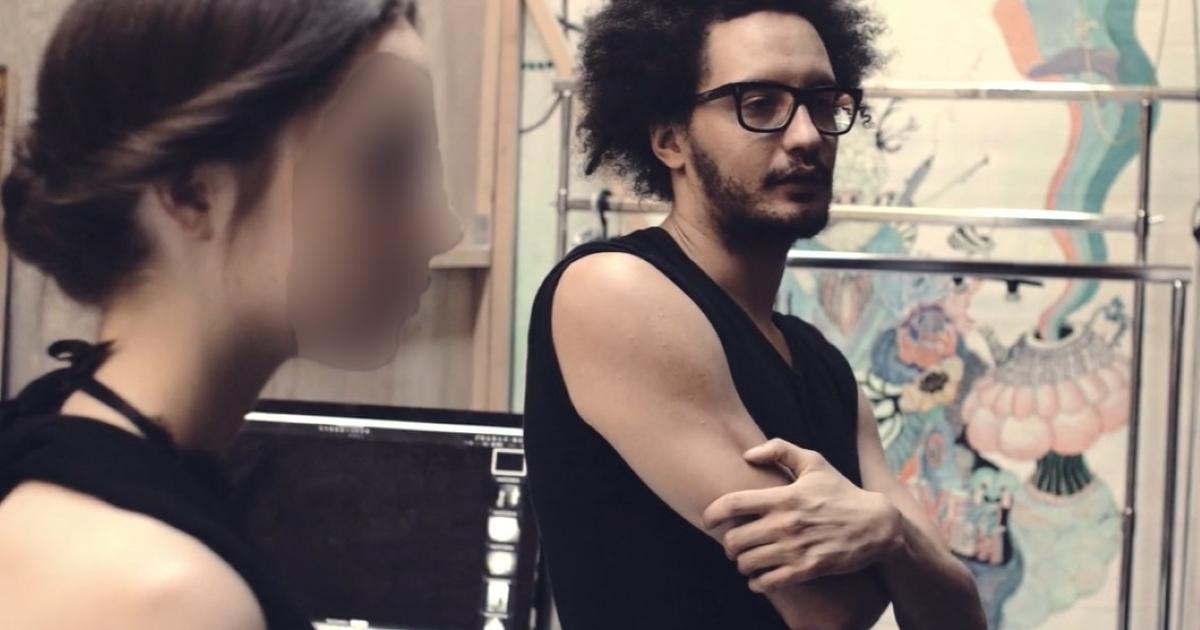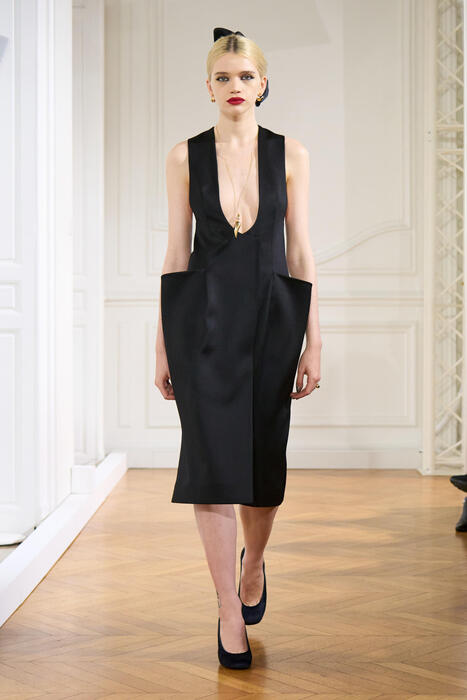We say bohemian and the first thing we think of is a carefree lifestyle, allergic to rules, rebellious.
It was believed that such was the behavior of the Gypsies who, supposedly, inhabited the ancient kingdom of Bohemia, within the present Czech Republic.
That's what Puccini must have thought when writing
La bohème,
the most performed opera in history, or even our Pablo Sarasate, with his famous and agitated
Bohemian Aires
.
There are gypsies, yes, but more in some Bohemias than in others.
Because today there are five "official" Bohemias: North, South, East and West, plus another Central whose capital, Prague, is also the capital of the whole country.
Of all of them, the least known is perhaps Eastern Bohemia, just an hour's train ride from Prague.
Almost deserted with tourists, there what one finds are rather explorers.
Seekers of sweet and catchy landscapes, cities and towns that are on their own, very sporty people (you see more cyclists than sheep), romantic castles, music-inspired craft beers, free and beautiful horses: such as the Kladruby nad Labem stud farm, included a few months ago by UNESCO in its list of world heritage.
All of them reasons that are well worth a trip when the situation allows it.
enlarge photo COVA FDEZ.
Music, beer and lots of art
enlarge photo The old monastery in the Czech city of Litomysl, with sculptures by the artist Olbram Zoubek in its garden.
KEN SCICLUNA AWL
The jewel in the crown of this eastern Bohemia is undoubtedly Litomysl, one of the most beautiful and culturally restless cities in the Czech Republic.
Grown in medieval times around a castle that the Pernstein lineage was in charge of converting, in the 16th century, into a Renaissance palace, and which is also, together with its gardens, a UNESCO heritage site.
With an Italianate and orderly air around a central courtyard, the most characteristic perhaps are the sgraffito on its external walls, which are not limited to geometric borders, but include mythological figures and historical figures.
The palace's halls feature furniture from the Romantic period, and there is a small court theater that is among the oldest of its kind in Europe.
Some say that the miraculous Infant Jesus of Prague, the
Jerulatzko,
from Andalusia
may have been in his chapel
: a Pernstein chancellor of the kingdom married a Spanish courtesan in the 16th century, and she gave the statuette as a wedding gift to his daughter, Princess Polyxena, who in turn would end up giving her to the Carmelite convent in Prague.
In the cellars of the palace is hidden a museum of a cursed Czech sculptor, Olbram Zoubek, ignored when not persecuted by the communist regime.
The descent into this peculiar expressionist hell is usually done with a glass of wine in hand from the castle cellars;
the tasting is included in the ticket.
enlarge photo Detail of the facade of the Litomysl castle, in the Czech Republic.
W. SKRYPCZAK Alamy
In front of the main facade of the Litomysl castle was the Palatine Brewery, whose brewmaster resided there;
and there was born in 1824 his son, Bedrich Smetana, father of Czech music, author of the musical poem
My country
and a lot of operas.
The rooms can be visited and have been preserved as is, with Smetana's cradle, family photos, scores and musical instruments.
The Smetana Festival that takes place every summer in the courtyard of the castle is one of the most prestigious in the world of opera;
Queen Sofía of Spain has ever been seen in its stands.
enlarge photo Smetana craft beers.
c.
paschal
Smetana not only plays the music, but also his face and name to several beers made by the Veselka artisan factory, which can be sampled at the Havran Café Steak Bar, next to Smetana Square.
This square is actually a very long street, lined with baroque and colorful buildings with arcades.
At number 117 you will find the Chocco Caffé, which makes internationally famous chocolates and pralines.
The attractions of Litomysl give to fill several days.
Between the square and the palace are the Escuelas Pías, converted into a city museum, and the baroque church of Santa Cruz.
Behind the temple, the gardens of the old monastery, with ponds and sculptures by Olbram Zoubek, are a very lively park where you can sit and have a snack and let the children run.
Oskar Schindler was born here
A porticoed street-square even longer than that of Litomysl is the backbone of the neighboring town of Svitavy.
Anchored on an old trade route, the brightly colored houses, on one side and the other, span all styles, from Gothic to Modernism.
The population acquired an industrial bias over time.
And it was in a textile factory on the outskirts, in the district of Brněnec, where a native of the city, Oskar Schindler, managed to bring a group of Jews to make weapons, just as he had previously managed to take others to his factory in Krakow to make perolas.
In all, he saved about 1,200 Jews from death at the hands of the Nazis.
The story is well known thanks to Steven Spielberg's film
Schindler's List
(1994).
In the municipal museum of Svitavy there is a permanent exhibition dedicated to Schindler, "right between the nations", and a plaque reminds him in the family home.
The Brněnec factory, now abandoned, is to be restored and turned into a museum by a great-grandson of the former Jewish owner.
enlarge photo The Plague Column and the Town Hall of the Czech town of Litovel.
alamy
A short drive of about 15 minutes takes us to Policka, the gateway to the Zdar Hills, the Highlands that separate this region from that of Moravia.
It is one of the most harmonious landscapes in Central Europe, with a contagious musical and chromatic quality.
In the center of the medieval ring of walls, Policka's Plaza Mayor boasts a baroque plague column and a Gothic church.
At the top of its tower, the composer Bohuslav Martinu was born on December 8, 1890.
It's not that the stork brought him, it's that his father was the municipal watchman in charge of ringing the bell if there was a fire, and the family had a minimal apartment up there.
You have to climb 192 steps to see that
lieu de mémoire,
so small that the father had to sleep under the hood.
The tower can be seen perfectly from the classroom and desk that Bohus occupied as a child, as he is affectionately called in the town.
The old school, converted in 1934 into a city museum, also houses a center on the life of the musician, who always drew on the folkloric roots of his land, even though he moved around the wide world, dying in Switzerland in 1959.
Policka oozes good taste everywhere;
in the street furniture of the placid promenade between the river and the walls, in the shops and shop windows where they shine - to be no less than Litomysl - bottles of craft beer bearing the name and effigy of Martinu.
An increasingly valued creator programmed in concert halls, whose music is personal and unmistakable.
South of Svitavy and Policka, Svojanov Castle is well worth a detour.
Its rock watchtower profile does not correspond to its interior, which is a costumbrista album of the daily life of a wealthy family in the late 19th century;
but the gruesome legends of ghosts and ghosts, and especially the mountainous and wooded landscape that surrounds the enclave, amortize the effort.
In addition, there is an inn and restaurant in the old castle stables that invite you to stay and enjoy the place.
enlarge photo A traditional carnival parade in Hlinsko, in the nearby district of Vesely Kopec, in eastern Bohemia.
D. TANECEK Alamy
Masks and puppets
From the city of Hlinsko, still in the Czech Highlands, its carnivals are well known, also included by Unesco in its heritage list.
The parades take place between the town of Vysocina and the district of Vesely Kopec.
The masks and costumes represent Turks, Jews, scarecrows, traditional trades… They take it very seriously;
Depending on the height of the Turk's leaps, for example, this is how high wheat or millet will grow that year.
Vesely Kopec is actually an open-air ethnographic museum, in the style of those that proliferated throughout Europe between the late 19th and early 20th centuries.
Original buildings, farms, houses, barns, mills, wells, blacksmiths, a church ... The interiors show in detail the peasant life of yesteryear, as if the inhabitants had just gone out to the meadow to feed the chickens.
And there is also a tavern where traditional and homemade meals are served.
enlarge photo Puppets at the Chrudim Puppet Museum in eastern Bohemia.
alamy
Leaving the Highlands for the plain, Chrudim is another of the highlights of the journey.
Its Plaza Mayor covers the inevitable column of the plague: these grandiose monuments dedicated to the Virgin, accompanied by little less than the entire heavenly court, were erected to give thanks for the end of an epidemic or for having avoided it, the fact is that the column will be missing in the city.
On one side of the parish church, with Gothic (but modern) profiles, a Renaissance building with its façade crammed with reliefs and figures is striking: it is the headquarters of the Museum of Czech Puppets, another thing that UNESCO declared intangible heritage;
the city holds an annual puppet festival.
But the museum that foreigners look for the most is the one that occupies the old Town Hall, converted into a realistic showcase —with figures and even group scenes— of daily life in the city throughout history.
In addition to that, the Chrudim Regional Museum dedicates several rooms to the work of a civilian who made a career in Prague and other cities of the nation: Alphonse Mucha, one of the most distinguished representatives of
art nouveau
.
Some of his best posters and original paintings can be seen at the show.
Next to the museum, on the terraces attached to the old bastions, you can eat while listening to the murmur of the river, or try a tempting palette of beers in various colors, including green, from the historic Litovel factory.
enlarge photo Wooden houses in the open-air ethnographic museum in Vesely Kopec, in the Czech region of eastern Bohemia.
alamy
Goulash
and cookies
Pardubice, the capital of the region, which even has an airport, is just a step away.
And a racetrack with internationally famous races - the Grand Prix reached its 130th edition last October.
But the historic center continues to breathe the leisurely atmosphere of a provincial and residential city.
With some very old buildings around its Plaza Mayor and the well-known plague column.
The civic tower that gives access to the square is a peculiar museum of local myths.
On the terraces of the square, pedestrianized, you can have the traditional Pernstein tent or the classic
goulash,
yes, with toasted local Porter beer, a delight.
For dessert, it is essential to try the typical gingerbread cookies, of whimsical shapes and decorated with colors;
They are everywhere, and they are a good souvenir to buy and take away.
The best of the city of Pardubice is, however, moving a bit away from the square, saving the moats and landscaped defenses that protect the medieval castle, also this converted by the lords of Pernstein into a superb Renaissance palace.
Inside it is housed the Museum of Eastern Bohemia, very educational and full, of course, with scenes and wax figures.
There is another castle on the outskirts of Pardubice, in Kuneticka Hora, the outline of which looms tantalizingly from any attic in the city.
The Thirty Years' War left it in tatters, but it has been restored - they are still at it - so that it can be visited.
Under its unique and battered tower there is an open-air theater where, in summer, performances or concerts are held.
The castle also serves for medieval festivities, falconry displays, banquets, weddings or baptisms.
What is third.
An idyllic setting before saying goodbye to eastern Bohemia.
The Emperor's Horses
Horses in the royal stables at Kladruby nad Labem, in eastern Bohemia, Czech Republic.
JOSEF VOSTAREK Alamy
The Kladruby nad Labem stud farm, a UNESCO intangible heritage, is perhaps the oldest in the world in operation.
Its origins date back to the Habsburg dynasty, around 1550. But it was later, in the time of Emperor Franz Joseph I of Austria, when
the stables and buildings that can be visited today were
erected
.
The Emperor himself and his wife Sissi came to visit their favorite steeds, the Kaldruber breed, especially prized for its gray and black specimens.
Tours (guided) can admire imperial pageantry related to ceremonial horses and carriages in a museum within the premises.
It is also possible to take a horse carriage ride through one of the most bucolic countryside imaginable.
And there is a restaurant with a traditional look and food.
One option is to reach this place by bike from Pardubice (they can be rented at the train station), making a circuit of about 50 kilometers.
Find inspiration for your next trips on our Facebook and Twitter and Instagram or subscribe here to the El Viajero Newsletter.


/cloudfront-eu-central-1.images.arcpublishing.com/prisa/ZUSCQAAVDZB4ZG3O6HXHMJFWCI.jpg)





